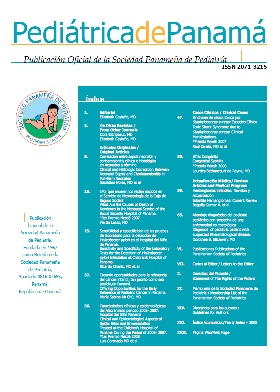Complicated pneumonia. Still a problem?
Authors
DOI:
https://doi.org/10.37980/im.journal.rspp.20221931Keywords:
complicated bacterial pneumonia, pleural effusion, empyema, necrosis, abscessAbstract
Introduction. Complicated community-acquired pneumonia (CCAP) is characterized by severe illness, hospitalization, and a long course. The complications of pneumonia occur when the infection is not limited to the lung parenchyma, but spreads to neighboring areas, or when the development of the infection is more complex than usual for different reasons. These pulmonary complications account for only 1% to 3% of them, but this percentage increases to almost 40% if hospital admission is required, which is why it is considered a fundamentally hospital pathology.
Objective. The purpose of this study was to analyze the complications of community-acquired bacterial pneumonia and describe its epidemiological, clinical, and etiological characteristics in the study period.
Material and method. This is a retrospective and descriptive study of complicated bacterial pneumonias and their characteristics at the Hospital del Niño Dr. José Renán Esquivel. A search was made of the clinical records of patients with a diagnosis of discharge from community-acquired bacterial pneumonia complicated by pleural effusion, pneumothorax, pioneumothorax, necrotizing pneumonia and lung abscess in the period from January 1, 2015 to December 31, 2020. All medical records retrieved were analyzed to obtain information on the complications of community-acquired bacterial pneumonia in relation to epidemiological data, frequency, characteristics, treatment, and clinical evolution.
Results. According to the data obtained from the statistical bulletins of the Hospital Del Niño Dr. José Renán Esquivel for the period from January 1, 2015 to December 31, 2020, 2,519 bacterial pneumonias were found, corresponding to 30% of pneumonia. Of the bacterial pneumonias, 277 cases of complicated pneumonia met the inclusion criteria, representing 11% of the bacterial pneumonia. The most frequent complication, in all age groups, was parapneumonic pleural effusion with a frequency of 170 cases (61%). The average age of patients with complicated pneumonia was 51.7 months (range from 27 days to 164 months) and the 1-4-year-old group was the most affected, presenting 118 (43%) cases of complications. The average length of hospitalization was 14.8 days with a range of 9-38 days. Patients received broad-spectrum intravenous antibiotics, the most widely used initial empirical treatment being ceftriaxone plus clindamycin. The average duration of antibiotic treatment was 12.7 days with a range of 10 to 25 days and varied according to the type of complication. 68 positive cultures were reported, 39 in pleural fluid samples and 29 in blood cultures. We found that the yield of bacterial cultures was higher in pleural fluid cultures compared to blood cultures, 28% vs 10% respectively. The most frequently isolated pathogens were Staphylococcus aureus in 34 (50%) patients, Streptococcus pneumoniae in 21 (31%) patients, and Haemophilus influenzae in 6 (9%) patients in the 68 positive cultures.
Conclusions. The 1–4-year-old group is the most affected, presenting 118 (43%) cases of complications. Pleural effusion is the most common complication of community-acquired bacterial pneumonia. 68 positive cultures were reported positive, and the yield was higher in pleural fluid cultures compared to blood cultures. The most frequently isolated pathogens were Staphylococcus aureus and Streptococcus pneumoniae. Most of the patients recovered despite significant morbidity.
Downloads
Additional Files
Published
Issue
Section
License
Copyright (c) 2022 Infomedic Intl.Derechos autoriales y de reproducibilidad. La Revista Pediátrica de Panamá es un ente académico, sin fines de lucro, que forma parte de la Sociedad Panameña de Pediatría. Sus publicaciones son de tipo gratuito, para uso individual y académico. El autor, al publicar en la Revista otorga sus derechos permanente para que su contenido sea editado por la Sociedad y distribuido Infomedic International bajo la Licencia de uso de distribución. Las polítcas de distribución dependerán del tipo de envío seleccionado por el autor.






